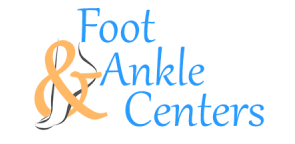What Causes Forefoot Pain and How to Get Rid of It?
Forefoot pain, often known as metatarsalgia, is characterized by discomfort in the front part of the foot, specifically around the metatarsal bones. It is frequently linked to aging, causing high pain levels and hindering activities like walking, running, and playing.
Metatarsalgia is a prevalent overuse injury characterized by pain and inflammation in the foot's ball. It's typically considered a symptom of underlying conditions rather than a distinct disease.
Diagnosing pain in this complex structure, which includes five metatarsals, fourteen phalange bones, and soft tissues, can be challenging.
What Are the Symptoms of Metatarsalgia?
Metatarsalgia's primary symptom is pain localized at the tips of one or more metatarsal bones located in the ball of the foot near the toes. This pain in the forefoot can manifest as sharp, dull, or burning sensations, resembling stepping on a small object like a pebble.
It tends to worsen during walking or running and may be accompanied by tingling or numbness in the toes. Athletes engaged in high-impact activities, especially those with concurrent inflammatory conditions like bursitis, often experience more widespread pain in the middle and front of the foot.
Typically, metatarsalgia pain develops gradually over several months rather than suddenly.
What Causes Metatarsalgia?
Metatarsalgia typically results from excessive pressure on specific foot areas, resulting in bottom forefoot pain. This pain is often due to high-impact sports or anatomical factors such as:
Variations in Metatarsal Length
Differences in the length of the first and second metatarsal bones can contribute to metatarsalgia.
Prominent Metatarsal Heads
Abnormal prominence of the metatarsal heads can increase pressure.
Muscular Factors
Factors like tight toe extensor muscles, weak toe flexor muscles, or a tight Achilles tendon can affect pressure distribution.
Hammertoe Deformity
Deformed toes, like hammertoes, may lead to metatarsal pain.
Hypermobile First Metatarsal
An excessively mobile first metatarsal bone can contribute. Other potential causes of forefoot pain and swelling include:
Obesity
Overpronation (excessive side-to-side foot movement)
Poorly fitting shoes
Stress fractures in the toes or metatarsals
Torn ligaments in the feet
Additionally, Morton's neuroma, a condition involving nerve irritation between the third and fourth toes, can produce symptoms similar to metatarsalgia, including pain and toe numbness in the forefoot.
What Are Metatarsalgia Risk Factors?
Forefoot injuries, including metatarsalgia, are prevalent among athletes engaged in high-impact sports in the United States. Sports involving running or jumping pose the highest risk, with track and field athletes particularly susceptible.
However, athletes from various disciplines, such as tennis, football, baseball, and soccer, can also experience dorsal forefoot pain. Additional factors that increase the likelihood of metatarsal pain include:
High Arch
Individuals with high arches are more prone to metatarsalgia.
High Heel Shoes
Wearing high-heeled shoes can contribute to forefoot issues.
Certain Medical Conditions
Conditions characterized by joint inflammation, such as osteoarthritis, rheumatoid arthritis, and gout, can be associated with metatarsal pain.
Age
The fat pad that cushions the ball of the foot tends to thin out with age, potentially increasing the risk of metatarsalgia.
How Do You Diagnose Metatarsalgia?
An accurate diagnosis requires thoroughly examining the patient's medical history and directly inquiring about the forefoot pain. A comprehensive understanding of forefoot anatomy enables a meticulous assessment, aiding in identifying the injured structure. Sometimes, the surgeon may request X-rays or MRI scans of the affected foot or ankle to validate the diagnosis.
Treatment of Metatarsalgia
Early intervention is crucial for pain relief. Mild to moderate cases can often be effectively managed with conservative treatment, while more severe conditions like neuromas and bunions may necessitate surgical intervention. Here are some conventional measures to alleviate metatarsalgia:
Medications
Your doctor may prescribe pain-relieving and anti-inflammatory medications as part of your forefoot pain treatment.
Rest and Ice
Rest your feet and apply ice packs wrapped in a towel to reduce pain and swelling.
Weight Management
Adopting a weight loss program can help relieve pressure on the forefoot if you are overweight.
Activity Adjustment
Avoid strenuous activities that strain the foot's bones and tendons, and perform specific exercises to strengthen foot muscles.
Custom Orthotics
Using customized insoles or orthotics can provide support and reduce pressure on the metatarsal bones.
Cushioning
Utilize toe, softening, or gel pads in your shoes to cushion the impact while walking. To reduce foot pain in the forefoot, choose footwear with low heels and wide-toe boxes, and consider silicone gel pads for added comfort.
Immobilization
In some cases, immobilization with a cast, splint, brace, walking boot, or similar device may be necessary to prevent foot movement and facilitate healing.
Surgery
Surgical intervention is a last resort, considered if conservative treatments fail. The decision depends on factors such as age, activity level, and the extent of damage to tendons, bones, or nerves, among others. Surgical procedures may involve realigning or reshaping the metatarsal bones.
Your healthcare provider will determine the most suitable treatment plan based on your forefoot pain causes, condition, and needs.
Take the First Step Towards Foot Pain Relief!
Experience relief from forefoot discomfort with Foot and Ankle Centers, your trusted foot doctor. Our expert team specializes in personalized forefoot discomfort treatment tailored to your needs.
Whether you're dealing with metatarsalgia, neuroma, bunions, or any other condition causing discomfort, we're here to help. Don't let foot pain hold you back from enjoying life to the fullest.
Contact Foot and Ankle Centers today and take the first step towards a pain-free, active lifestyle. You deserve to be free from forefoot pain. Your feet also deserve the best care, and that's precisely what we provide.
Call us now to schedule your appointment and put your best foot forward!


